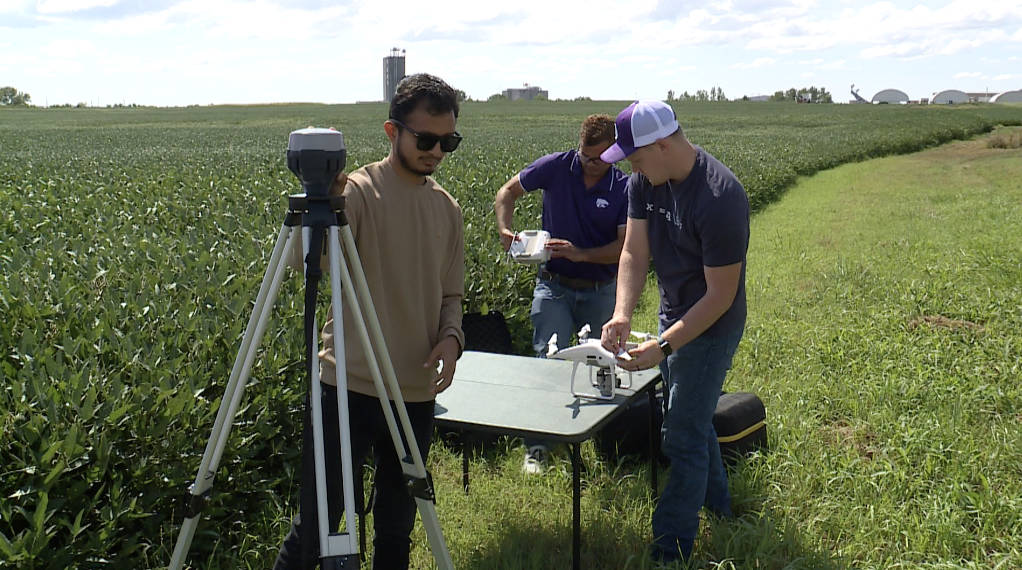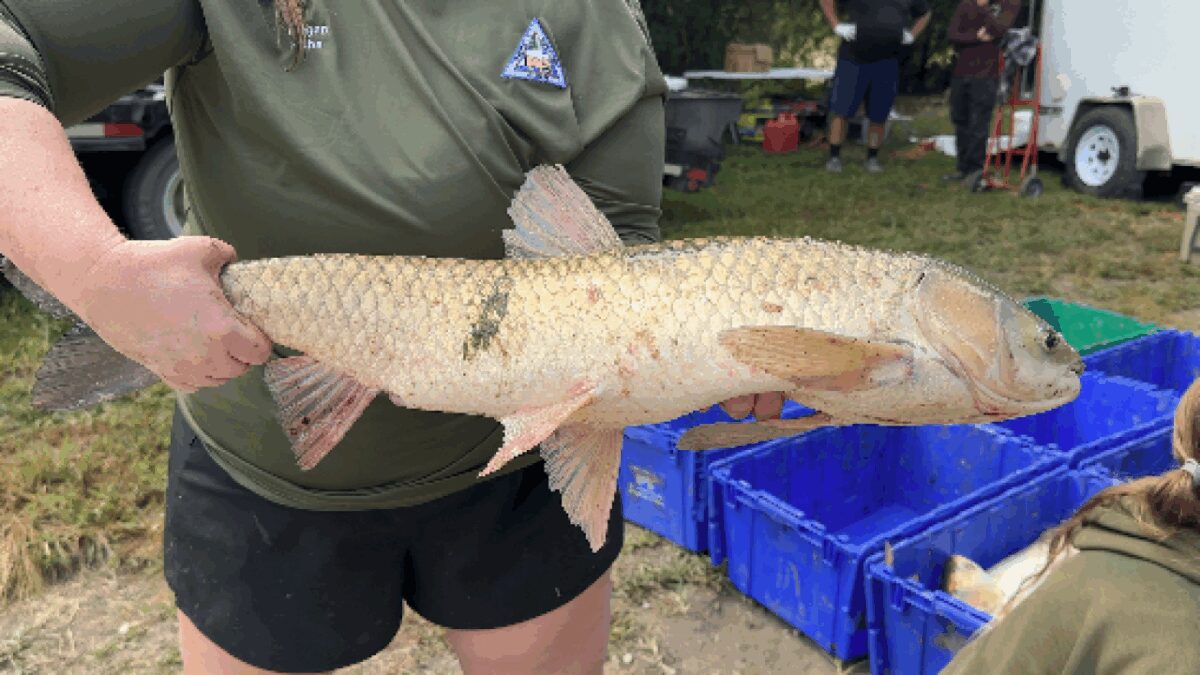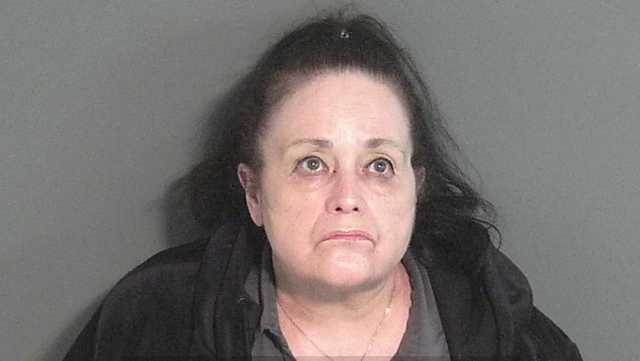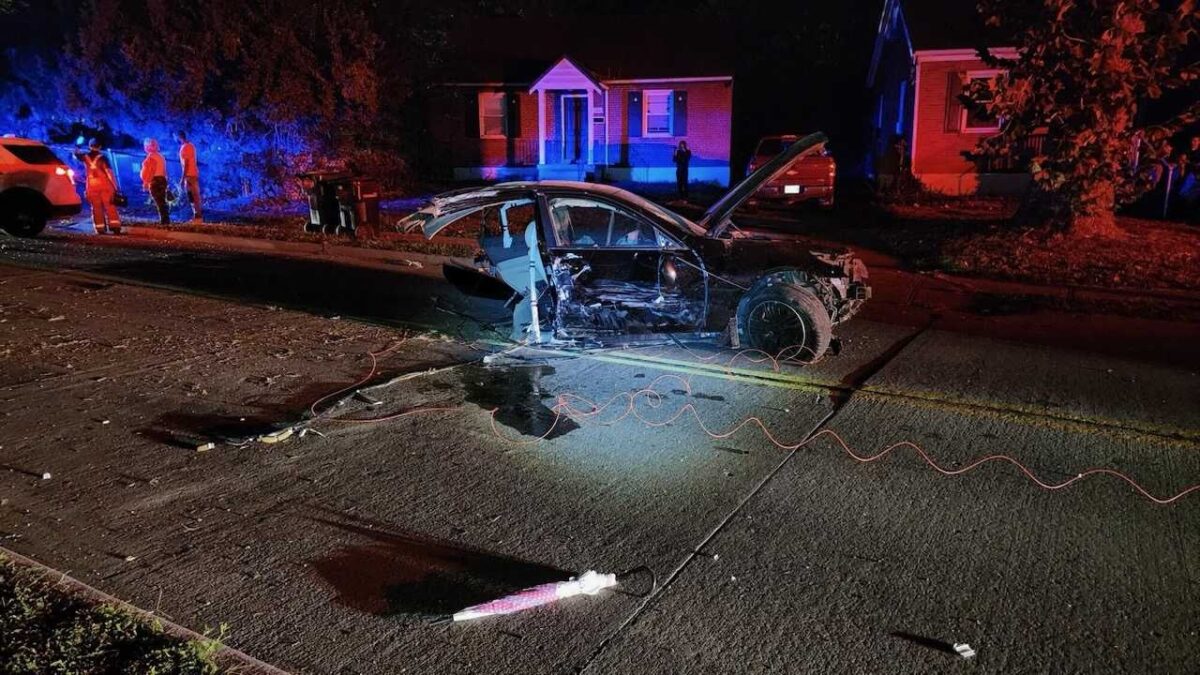By JuYeon Kim
Click here for updates on this story
Missouri (KSHB) — The use of artificial intelligence is growing in every sector of daily life, and this includes how food is produced. Industry experts say the use of precision agriculture (PA) has boomed in the last 15 to 20 years.
While the use of PA greatly depends on farm size, geographical location, farm type, technology type and cost, 2024 data by the USDA Economic Research Service shows guidance auto-steering systems on tractors, harvesters, and other equipment were used by 52% of midsize farms and 70% of large-scale crop-producing farms in 2023.
Yield monitors, yield maps, and soil maps were used on 68% of large-scale crop-producing farms.
Storm Dancer Farm Margaret Chamas and her husband Eric started Storm Dancer Farm in 2015.
The couple focuses on dairy goats for production and show, a small flock of layers, several equines, and meat goats and sheep for grazing services.
Chamas started targeted grazing in 2018. She has been using physical fencing, electrical netting and solar chargers to keep her goats contained in a specific area.
But in the winter of 2024, she hopped over to virtual fencing. She now depends on GPS fencing that uses cell signals to communicate with goat collars.
She can monitor and move her goats by adjusting the perimeters with her fingertips on the app. Anytime a goat escapes the perimeters she has set, Chamas will get a notification on her phone showing which goat has escaped and its location.
“The goats will walk towards the barrier, get that ascending tone. At the top of the scale, they’ll get an electric shock,” Margaret Chamas said. “I can get these goats to go anywhere on this property I want them to without having to come out and string up fence, and without having to worry about a lot of other physical obstacles or limitations.”
Chamas says the change in operation has been very effective, and she was pleasantly shocked herself when her grazing goats quickly adapted to the new technology.
To put the benefits into perspective, she finally took a vacation last year.
“It’s a game changer — like the peace of mind of knowing where your animals are is a big one,” she said. “The ability to start to identify one who’s not feeling well because they are always lagging behind. I can do that so much easier when I’m just looking at my phone.”
Chamas uses a Norwegian brand called No Fence. According to the product’s website, each collar costs $255, and the subscription to the app and system is $45 per year for five to 49 collars.
With spare batteries and other upkeep taken into account, Chamas says it is about $75 per goat, per year.
“Yes, it’s costly per animal, but this is fence that you can put anywhere,” she said. “It really is improving animal management as well as the land management.
Precision agriculture research at Kansas State University At Kansas State University, there is a dedicated group of researchers who are experimenting with precision agriculture and helping local farmers.
According to the precision agriculture landing page, the goals of the research include:
Developing more accurate methods to document farming practices to demonstrate compliance with various government programs and regulations. Expanding the capability of researchers to conduct replicated, commercial-scale, on-farm research in precision agriculture. Helping producers implement this technology and successfully apply the results to improve efficiency.
“Main goal of precision Ag is to optimize the yield, crop yield, by minimizing the use of the input, like fertilizer, or irrigation, or herbicides, pesticides,” said Dr. Deepak Joshi, assistant professor of precision agriculture.
Precision agriculture offers a myriad of benefits, including less physical labor, time saving, solutions to the labor shortage, and environmental sustainability by reducing waste and chemical harm.
Farmers and industry experts are using tools like drones, satellite imagery, autonomous tractors, and various digital systems for decision-making.
Depending on the types of sensors, farmers are able to measure soil moisture, identify weeds, diagnose the health of the plant, and take plant body temperature for irrigation planning.
For example, the drone pictured below was made out of Styrofoam and costs about $18,000. It can cover 150 acres in less than 45 minutes. It has a multi-spectral sensor that creates NDVI maps, which helps farmers identify healthy and unhealthy plants.
The helicopter drone below costs about $2,000. It has an RGB sensor that mimics the human eye. It is used for smaller acres to filter out weeds.
There are also drones with thermal sensors, which can cost over $20,000. Those are used to measure plant body temperatures to help make decisions around irrigation and catch plant diseases and insects.
“Once we collect those images, we bring that images to the campus in our lab, in our computer,” Joshi said. “We process them, we analyze them, and we bring that image back to the farmer within couple of days of the flying, and so that they can make the decision at the right time.”
As AI data becomes more available and dependable, Joshi believes farmers will eventually be able to trust the recommendations more and fact-check less.
“We already know a lot, and we are improving a lot,” he said. “So they (AI drones) will fly, and at the same time, they will analyze as well on the sky. And they will give you recommendation right away at the same time.”
Digital farming solutions at Bayer Crop Science Like most up-and-coming ideas, there are still limitations:
Poor internet access in rural areas Initial cost of entry Data security concerns Education gap for farmers on how to use tools
LeAnna Guerin is Bayer Crop Science’s director of data science and data engineering in the digital farming solutions organization. She says another barrier she often sees is the hesitancy and doubt from farmers to give their digital tools a try.
This is why Guerin believes it is important for tech companies to involve farmers in the discussions and develop the technology together. It allows for rapid feedback and true understanding of farmers’ needs.
“They want to be able to trust it, but they need to see it proven on their farm. And that’s where we’re really partnering together, where we conduct experiments with them,” Guerin said. “We may offer them a recommendation based on an AI model or a statistical model, and we offer them a program where they can plant part of the field in the way that they would traditionally plant it, maybe with a hybrid that they are comfortable with. And we would offer them a bag or two of seed to plant our recommendation so they can see the data for themselves.”
Despite existing barriers, Guerin says the use of AI is the future. Choosing to opt out may mean farmers start to lag behind their competitors.
At Bayer Crop Science, she says researchers and product developers are thinking of ways to make this transition as easy and smooth as possible for producers.
“They’re not gonna take time out of their day, usually, to go sit through a training seminar or even an online training course,” Guerin said. “They want an expert who knows the digital tech, who knows the agronomy. They want an expert with them, on the farm, as they are running a system or as they are getting ready to make a decision about planting.”
She understands there are risks when it comes to changing how to operate, but she also wants farmers to know that with it comes potential benefits.
For example, a solution to the ongoing labor shortage.
“I think these tools can definitely help when we have limited labor, limited resources, so that farmers can really utilize the resources that they do have available to them to make the most efficient activities,” Guerin said.
Guerin spoke to the trustworthiness and effectiveness of the tools that currently exist.
“What we might learn one year may not necessarily hold true the next year if the weather drastically changes, if commodity prices change, if there’s a new disease pattern,” she said. “What we’re finding is it’s very important that we continue to have humans and have experts review the output, review the results, and also provide perimeters to the inputs of these AI models.”
Storm Dancer Farm Back on Storm Dancer Farm, Margaret Chamas thinks her virtual fencing will never fully replace the physical fence.
She also worries about things like reliability and data security as society integrates AI into more areas of life.
“I’m not personally super concerned that someone will try and mess with my goats that are on somebody’s private property in the middle of Missouri. But yes, overall, who owns the data? And who’s allowed to use it? And what security measures are being taken?” Chamas said. “It’s a growing concern in my mind, especially for programs where government funding is being used to support grazing. Are they going to say we want your data, or we expect your data? Or we have rights to your data cause it’s on our land?”
But as her business grows, and the accuracy of AI increases, Chamas is excited about the possibilities.
“You know, are we gonna put like a mini GoPro in here so we can take a snapshot? Like where is this goat? You know, see what it’s seeing. Or another one would be any sort of biometrics, like a heart rate or a temperature. Those would be other cool add-ons,” Chamas said.
Please note: This content carries a strict local market embargo. If you share the same market as the contributor of this article, you may not use it on any platform.






